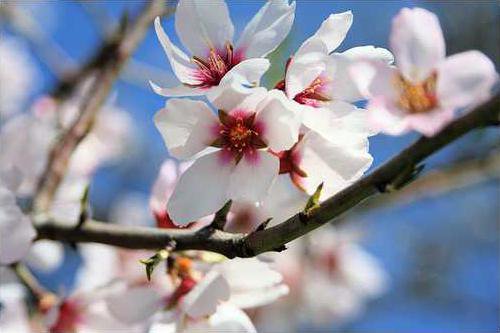While many almond growers throughout Stanislaus County joined the rest of California as they hoped for enough rain to end the five-year drought, recent downpours have left many questioning just how successful this year's crop will be.
"It's still a little too early to tell how good the crop is, but the early rains had to have affected the nonpareil crop, which is still the largest variety planted," said Stanislaus County Board of Supervisors Chair Vito Chiesa, who also operates a 60-acre almond farm in Hughson. "Some of the later varieties found some good weather, but there just wasn't enough bee pollination time for those early varieties."
Chiesa said that due to the increased amount of rain this year, he has had to spray fungicides more frequently, especially coming out of a five-year drought. These sprays work to combat fungus that thrives in conditions that combine both heat and moisture. He said that while it is typical for almond growers to spray fungicides twice a year, he already completed his third round Friday and said he wouldn't be surprised if he had to do it again.
"I suspect it's not going to be a real big crop because the early blooming varieties just didn't have enough time to pollinate. There wasn't enough good weather for the bees to do their job," said Chiesa. "As we were fighting a lack of water during the drought, the pollination was much better. So farmers here are constantly having that struggle of needing snowpack versus not wanting it to rain during pollination times."
As a third-generation farmer in Ballico, Derek Spycher said that he has faced the same challenges with the rain as Chiesa. In order to prevent rot, he has had to spray fungicides on his trees three times already this year. In previous years, he has only had to spray once during a bloom period.
"When the bloom comes, it becomes a little bit more difficult because when it starts raining you run into mildew and mold," said Spycher. "Those sprays have a ten-day hold period, so we potentially have to keep reapplying until the rain stops. So, it's up to Mother Nature how many times we have to spray."
Spycher said while he has had to continuously apply fungicide to his trees, he doesn't think that the recent rain has had a detrimental effect on his crops.
"We've all been praying for rain and it finally came, so I think the amount of rain we've gotten has definitely been great," said Spycher. "It's possibly a little early to tell, but overall the crop looks good."
Almond Board of California Director of Agricultural Affairs Bob Curtis said that whether or not recent storms have had a negative effect on a grower's almond crop this year depends on a number of variables, with the most significant indicator being when their almond trees bloomed.
"Well, it's a mixed bag to a certain extent depending on when your peak bloom was in particular," said Curtis. "If the peak bloom was during the heavy rain that took place over President's Day weekend, their set might be much lighter than normal."
According to the Almond Board, blooms take place between late February and early March. During this time, almond tree buds blossom into light pink and white blooms in preparation for pollination. Nonpareils are usually the first to bloom, while other varieties bloom later.
As the trees blossom, honey bees pollinate almond blossoms, which later grow into an almond.
Curtis said that due to less-than-favorable bloom conditions, the honey bees did not get enough time to pollinate the almond trees that bloomed during periods of significant rainfall.
"We haven't had optimal bloom conditions, but on the other hand if you look at the bigger picture, it's not a widespread disaster," said Curtis. "We're still going to have a crop."





